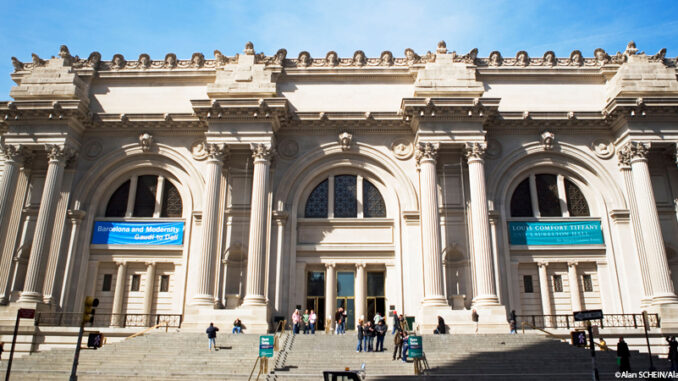
Americans Approve of Same Sex Marriage
Gallup released a new poll in June about same-sex marriage to coincide with Pride Month. The data shows that support for same-sex marriage in the U.S. is at an all-time high.
According to the poll, which was released on Tuesday June 8, 2021, 70 percent of Americans now support same-sex marriage. This is a 10 percent increase from 2015, which was the year that the U.S. Supreme Court ruled in Obergefell v. Hodges that same-sex marriage was legal and would be recognized in all fifty states. And it’s a drastic change from 1996, when Gallup first began polling on this issue. At that time, only 27 percent of Americans supported same-sex marriage.
How does support break down by political party? Support for same-sex marriage is on the rise for Republicans. About 55 percent of Republicans now say they approve of it, joining 83 percent of Democrats. This marks the first time in American history that the majority of Republicans have been in support of same-sex marriage. Meanwhile, support among Democrats has remained steady, and approval numbers have risen slightly for independents as well, up to 73 percent.
What about age? Younger people are more supportive of same-sex marriage. Support has increased within all three age groups:
- 84% of young Americans (aged 18-34),
- 72 percent of middle-aged Americans (the ages of 35-54), and
- 60 percent of older Americans (ages 55 and older).
Dig Deeper Create a graph or chart to display the information found in this article. Examples could include the relationship between age and support for same-sex marriage; the relationship between political party and support for same-sex marriage; or the changing support for same-sex marriage over time.
France Sends Second Statue of Liberty
The Statue of Liberty was a gift from France to the United States in 1886. The gift recognized the friendship and commitment to freedom that both nations share. Now, in the spirit of that continued commitment to friendship and democratic ideals, France is sending a second statue. This is an exact replica of the original Lady Liberty, but one-sixteenth the size. Nicknamed “Little Sister,” the new statue is 9 feet tall and weighs almost 1,000 pounds.

Little Sister already has a busy itinerary planned. The statue will set sail for the United States on June 19, 2021, and will be placed on Ellis Island facing the original Lady Liberty. It will remain there for Independence Day, from July 1-5, and then will be removed and taken to Washington, D.C.. It will arrive at the residence of the French ambassador in time for Bastille Day on July 14, 2021 and will remain at the ambassador’s residence for the next ten years. This mini-version of the original is hardly unique: over 100 replicas of the Statue of Liberty exist around the world. More than 30 of them are located in France alone! Unlike the original statue, which had to be shipped across the ocean in pieces and reconstructed on Ellis Island, this one will arrive intact. Starting June 20, 2021, you can watch the live view of her crossing the Atlantic Ocean at this website.
Dig Deeper One of the most interesting replicas of the Statue of Liberty can be found on a piling in the middle of the Susquehanna River in Harrisburg, Pennsylvania. Use Internet resources to learn more about this fascinating statue, which began as a prank. Write a paragraph about what you find.
Museum Returns Artwork to Nigeria
Like all history, the history of art is complicated. This is especially true of art acquired during colonialism. In the late 1800s, the British Empire controlled the Kingdom of Benin, in present-day Nigeria. Sculptures, castings, and other art were removed from West Africa by the British military and taken back across the ocean to Great Britain. Some of the art was then distributed to other Western collectors. Two sixteenth-century brass plaques and one fourteenth-century brass head were shipped to New York City to a collector named Klaus Perls. He also owned 150 other pieces of African art, including carved elephant ivory, jewelry, masks, musical instruments, and brass figurines. In 1991, Perls donated the three pieces in question to New York City’s Metropolitan Museum of Art (commonly called The Met).
The museum does not consider these pieces to be stolen, as they were purchased lawfully. However, what is legal is not always ethical. After a year of research into the history of the three pieces, the Met has now decided to return the artwork to Nigeria. Nigeria’s Minister of Information and Culture, Alhaji Lai Mohammed, praised the decision. Mohammed said that he hopes other museums around the world will follow the Met’s example and other European museums and return stolen art to the culture that created it.
What Do You Think? In your opinion, did the Met have an obligation to return the artwork to Nigeria? Why or why not? As always, please remember to be sensitive with your answer.
New Dinosaur Species Discovered
Have you ever heard of the Australotitan cooperensis? It’s thought to be the largest dinosaur species to ever roam the Australian continent, as well as one of the top fifteen largest dinosaurs worldwide. If you’ve never heard of it before, that’s because it’s only recently been identified. Bones of the giant creature were first discovered on a farm near Eromanga, in southwest Queensland, in 2007. The remains were largely intact. Since then, scientists have worked to identify the dinosaur by comparing 3D scans of its bones to other, similar dinosaur species. This process took a long time because of the remote location of the bones, plus their fragile condition and huge size. Many of them were so big and heavy that they required a forklift to move.
What do paleontologists know about the Australotitan so far? It was a type of sauropod: a species of very large, plant-eating dinosaurs. Like its cousin the Brontosaurus, it had a small head, long neck, long tail, and thick legs. It was about 21 feet (or about two stories) tall and would have been about as long as a basketball court. It weighed about 70 tons. (That’s 140,000 pounds!) These creatures lived during the Cretaceous Period, about 92 to 96 million years ago.
Australia is mostly flat, lacking the mountain ranges and canyons that are common on other continents. Because of this, dinosaur bones don’t really get exposed the way they do in other places. This makes them more difficult to find. In this case, the bones were discovered by Robyn and Stuart Mackenzie, who were riding their motorbikes on their sheep and cattle farm when they saw what looked like a pile of large black rocks. Those rocks turned out to be the first sighting of Australotitan cooperensis.
